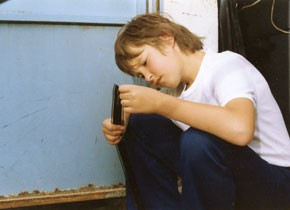Another Country
Five Austrian Film Histories
December 11 to 18, 2014
Earlier this year, in order to celebrate the 50th anniversary of the Austrian Film Museum, the Diagonale festival in Graz presented a special program that is now also on show at the Museum. The three words in the name of the institution literally serve as programmatic filters – and as a series of open questions: Austria? Film? Museum?
Firstly, the only admissible source for the film selections was the museum itself: a collection of cinematographic documents that has been built over the course of 50 years. Secondly, it is only logical that films are collected here; but what is the central idea of the film medium that is expressed through the museum collection? And, thirdly, what perception of Austria can be derived from such a collection which, since 1964, has followed decidedly non-nationalistic considerations?
The resulting program consists of five parts: “Kino” (films which deal with cinema itself); “Nazis” (films by and about National Socialist – and other anti-Semitic – individuals and institutions); “Our Vienna” (about a concrete post-war moment, circa 1957-67, when a demand for the modern arose in the capital); “Der Klang der Sprache des Films” (referring to some specific ways in which sound, speech, text and image have been woven to summon a distinctive locus – the "Austrian" in light of the "filmic"); and, finally, “In Transit” (including films shot in Austria by non-Austrians and films by Austrians shot elsewhere, and expressing a certain skepticism about traditional ideas of a national cinema).
The size of the program, with its five small (hi)stories, automatically precludes the assumption that a “representative” picture of any sort might be drawn here. Neither Austria nor the Film Museum Collection are portrayed "in all their facets" or in a "balanced" fashion. On the other hand, the selection might be strangely representative of film itself – in the sense that the so-called marginal forms of cinema gain an advantage here over the culturally dominant feature-length formats (which, in reality, make up only a fraction of the global film heritage). In total, the program includes 33 works, made between 1896 and 2014, with only 1 feature film (Wolfgang Murnberger's Himmel oder Hölle), 1 longer documentary (Michael Pilz' Franz Grimus), and 1 medium-length hybrid (Unser Wien) among them. The other 30 elements in the program come from areas such as film poetry, essay films, advertising and artist’s films, early actualities and later newsreels, home movies, anthropological documents, film fragments, trailers, and films for television.
The program proposes that there is a kind of greatness to each and every one of these 33 works – they were not selected to prove a point or illustrate a thesis, but on their own merits. In several cases, these merits relate to something that lies beyond “authorial” categories: a peculiar power, emanating from a confrontation between the world and the cinematic machine, where the insanity, beauty or horror of historical reality appears clearly in a momentary flash – as if excoriated by the sheer attendance of the camera apparatus. This aspect also contributes to films made by artists. There, however, an additional membrane is inserted between the world and the cinema machine, and it pulses to its own individual beat, according to the ever-newly negotiated rules of another country.
Curated by Alejandro Bachmann, Sebastian Höglinger, Alexander Horwath, Barbara Pichler and Regina Schlagnitweit, the series takes place in conjunction with the "Film Curatorship" course offered every semester by the Department of Theatre, Film and Media Studies at Vienna University.
Program "Another Country" (PDF, in German)
